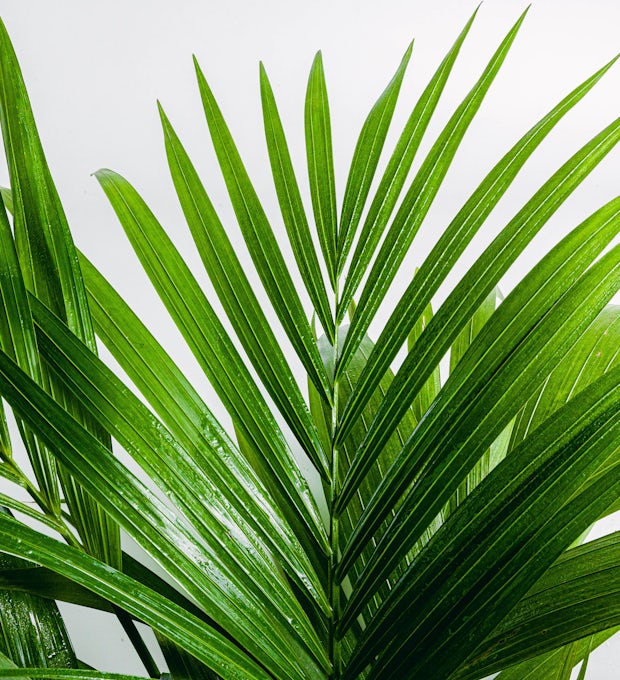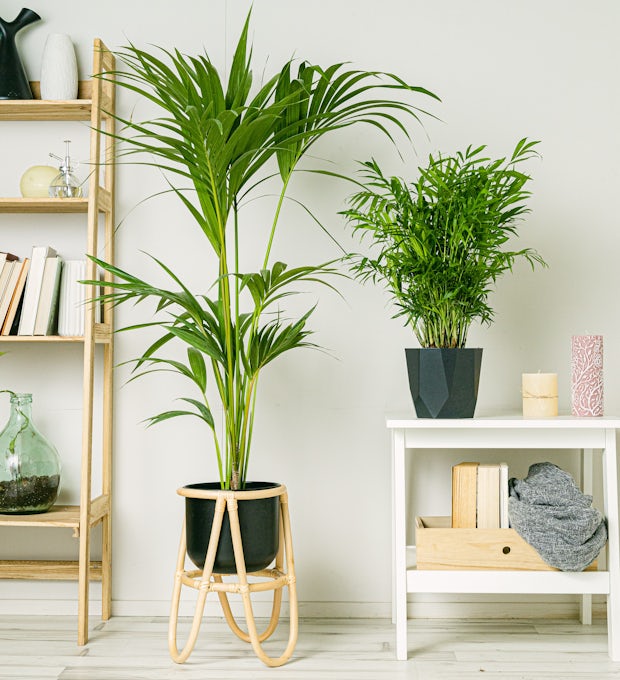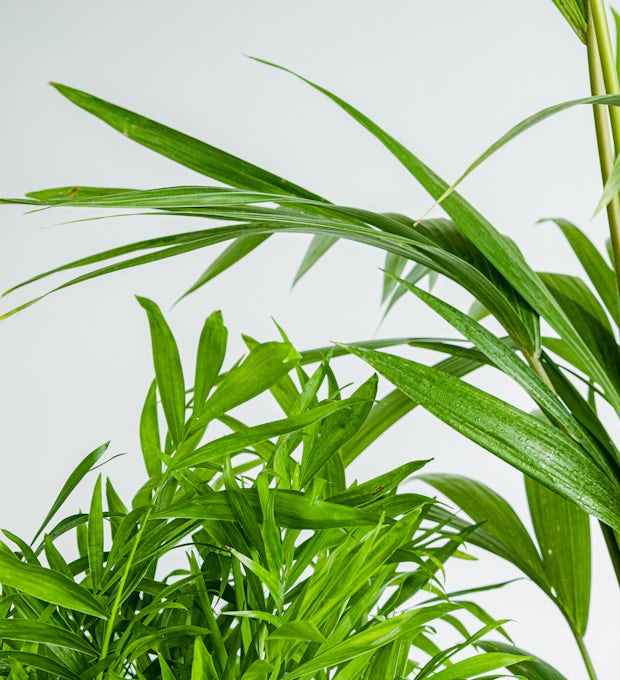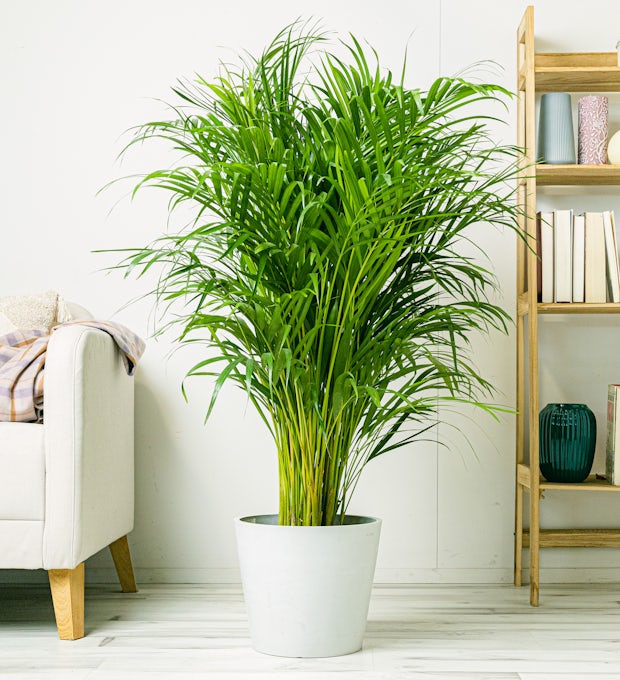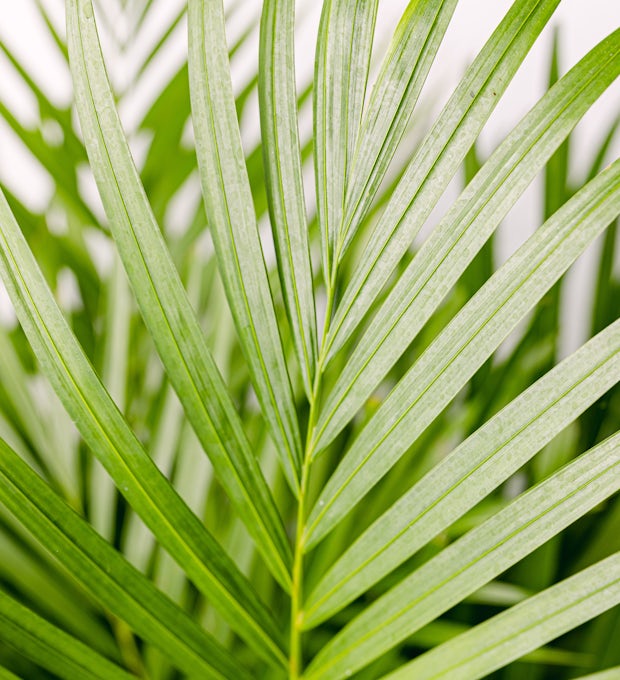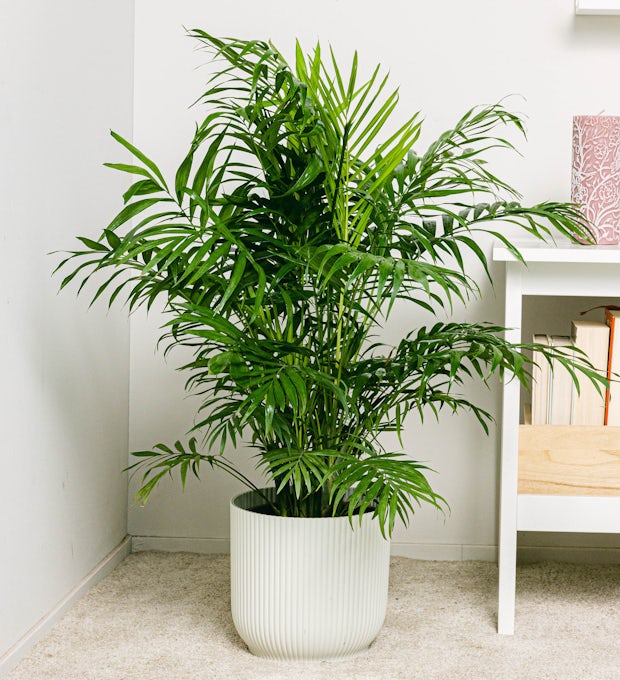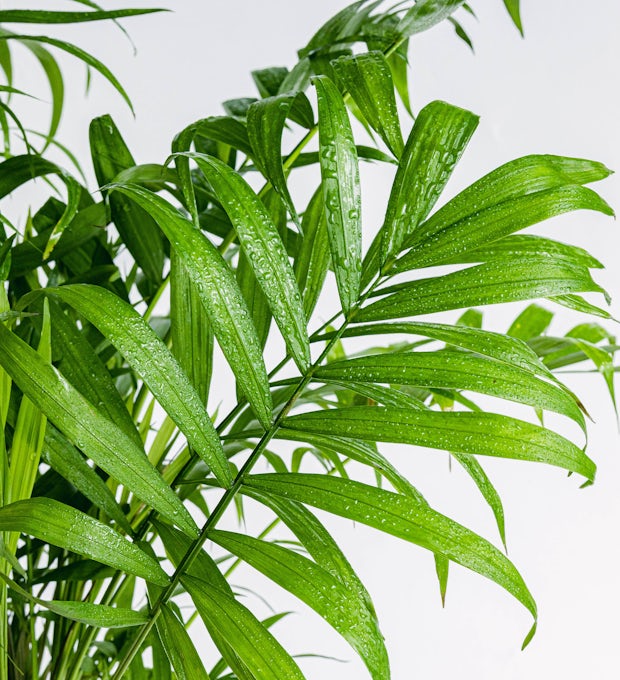Do you love having plants at home but are worried that air conditioning could damage them? Worry no more! In this comprehensive guide, you'll discover all the secrets to protecting your precious Kentia palm from the cold of air conditioning. We'll show you how to identify the symptoms of cold damage in your plant, how to prepare the right environment, and give you practical tips to keep your plant happy and healthy. In addition, we will also explore alternatives to air conditioning so that your plant continues to look beautiful without suffering any damage. Don't waste any more time and find out how to revive a cold-damaged Kentia Palm!
The beauty and elegance of the Kentia Palm
The Kentia Palm is a very popular houseplant for its beauty and elegance. Its long, arching leaves give it a sophisticated look that makes it stand out in any space. Its lush, dark green foliage creates a cool, tropical vibe in any room. In addition, its leaves are soft to the touch, which gives it a delicate and pleasant touch. The Kentia Palm is known for being hardy and easy to care for, making it the perfect choice for those who want to have a beautiful plant but have no gardening experience. Its exotic appearance and ability to adapt to different conditions make it very versatile and suitable for any style of decoration. Whether in a living room, bedroom or office, the Kentia Palm adds a touch of natural elegance that transforms any space into an oasis of calm and serenity. It's no wonder that this plant is so appreciated by lovers of nature and interior decoration.
The Dangers of Air Conditioning for Your Plant
Air conditioning, that savior on hot days, can become the worst enemy of your precious Kentia Palm. While it's wonderful to enjoy a cool and comfortable environment, the extreme cold emanating from this appliance can wreak havoc on your plant. The Kentia Palm is a tropical beauty that does not tolerate low temperatures well, and air conditioning can expose it to intense and constant cold that weakens and damages it. It's like I'm stuck in a freezer with no escape. Imagine how you would feel if you were forced to live in a fridge all the time. Your plant experiences the same thing.
Air conditioning can negatively affect your Kentia Palm in a number of ways. It can cause its leaves to turn yellow or brown, dry out, or even fall off prematurely. In addition, excessive cold can slow down their growth and prevent them from developing properly. It's as if the air conditioning leaves it frozen in time, unable to move forward or flourish.
It's important to be aware of these hazards and take steps to protect your plant from the cold of air conditioning. Do not allow your beloved Kentia to suffer the consequences of an artificially cold environment. Be sure to read the full guide to learn about all the ways to protect her and keep her happy and healthy. You don't want to see your beautiful Kentia struggling the cold, do you?
We ship plants to all locations, you can see more options here.
Identifying the Symptoms of Cold Damage in Your Kentia Palm
When your Kentia Palm is exposed to the cold of the air conditioner, it's important to be able to identify the symptoms of damage early. One of the most obvious signs is the color change in the leaves. If you notice your plant's leaves turning yellow or brown, it's likely suffering from the cold. In addition, you may also notice that the leaves become brittle and break easily. Another common symptom is premature leaf drop. If you see that your Kentia Palm is losing a lot of leaves prematurely, it is possible that the cold of the air conditioner is affecting it negatively. In addition to these visual symptoms, you may also notice a change in the plant's growth. If you notice that the Kentia Palm isn't growing like it used to, it may be another indication of cold damage. It's important to pay attention to these symptoms and take steps to protect your plant before the damage becomes irreversible.
We ship plants to all locations, you can see more options here.
Preparing the Right Environment for Your Plant
To properly protect your Kentia Palm from the cold of air conditioning, it's essential to prepare the right environment for your plant. Temperature and humidity are two key factors to consider. First of all, make sure to place your plant away from the cold drafts that come from the air conditioner. Find a place in your home where the plant is protected from these drafts, such as a corner away from windows or doors. In addition, it is important to maintain a constant temperature around the plant, avoiding sudden changes that can damage it. Try to keep the temperature between 18 and 24 degrees Celsius to provide a comfortable environment.
In terms of humidity, the Kentia Palm requires a moderate level. You can increase the humidity around the plant by using a humidifier or placing a bowl of water near the plant. In addition, you can spray its leaves with warm water regularly to keep them hydrated. Remember that air conditioning tends to dry out the environment, so it's important to counteract this effect to protect your plant.
Preparing the right environment for your Kentia Palm not only ensures its well-being, but also helps to highlight its beauty and elegance in your home. By providing it with a comfortable and inviting space, you'll be creating an environment conducive for your plant to thrive and grow healthily.
Practical tips to protect your Kentia palm from the cold
When it comes to protecting your Kentia Palm from the cold, there are some practical tips you can follow to make sure your plant is happy and healthy. First of all, it's important to place your plant away from the cold drafts generated by the air conditioner. You can place it in a place where it won't be directly exposed to cold airflow or use curtains or dividers to block the draft. Also, make sure to maintain a consistent and suitable room temperature for your plant. Avoid sudden changes in temperature that can negatively affect it. Another way to protect your Kentia Palm is by providing it with extra moisture. You can spray its leaves with water regularly or place a tray of water near the plant to increase the humidity of the air. Additionally, it is important to note that the Kentia Palm needs indirect light and should not be exposed to extreme temperatures. Therefore, avoid placing it near cold windows or places where it receives direct sunlight for long periods of time. By following these practical tips, you will be able to protect your Kentia Palm from the cold and enjoy its beauty and elegance for a long time.
Alternatives to Air Conditioning to Keep Your Plant Happy
If you want to keep your Kentia Palm happy but don't want to rely on air conditioning, don't worry! There are alternatives you can consider to maintain a cool and pleasant environment for your plant. One option is to use ceiling or floor fans to create a gentle airstream that cools the space without being too aggressive. In addition, you can open the windows during the cooler hours of the day to allow fresh air and natural circulation to enter. Another alternative is to use curtains or blinds to block direct sunlight and thus reduce the temperature of the environment. You can also place containers of water near the plant, as evaporating helps to cool the environment. If you live in an area with a warm climate, consider installing awnings or umbrellas outside to protect your plant from direct sun. Remember that every plant is unique, so it's important to observe how your Kentia Palm responds to these alternatives and adjust them as needed. With a little creativity and care, you can keep your Kentia Palm happy and protected from the cold of the air conditioning.
How to Revive a Cold-Damaged Kentia Palm
If your Kentia Palm has been damaged by the cold of the air conditioning, don't worry, there is still hope to revive it! The first thing you should do is move it to a warmer, more protected place, away from cold drafts. Then, check the plant's leaves for signs of damage, such as brown or yellowish spots, and carefully remove them with clean scissors. Next, water the plant properly, making sure the soil is moist but not soggy. To aid the recovery of your Kentia Palm, you can use liquid houseplant fertilizer once a month, following the manufacturer's instructions. Also, place the plant in a place with indirect light and avoid direct sun exposure during the recovery process. Finally, be patient and watch your plant slowly recover. It may take a few weeks or even months to return to your optimal state, but with proper care, you're sure to see significant improvements. Don't be discouraged if some outbreaks don't survive; the important thing is to give your Kentia Palm the love and care necessary for its recovery. Courage!
The Kentia Palm is a beautiful and elegant plant that can add a touch of nature to any space. However, air conditioning can pose a danger to your health and well-being. Identifying the symptoms of cold damage and preparing the right environment are key steps in protecting it. In addition, there are alternatives to air conditioning that can keep your plant happy and healthy. If your Kentia Palm has been damaged by the cold, don't despair. There is still hope to revive it. This article has provided a comprehensive guide to protecting your plant from the cold of air conditioning, but it's always important to remember that every plant is unique and may require extra care. So keep researching and experimenting to keep your Kentia Palm happy and flourishing!

